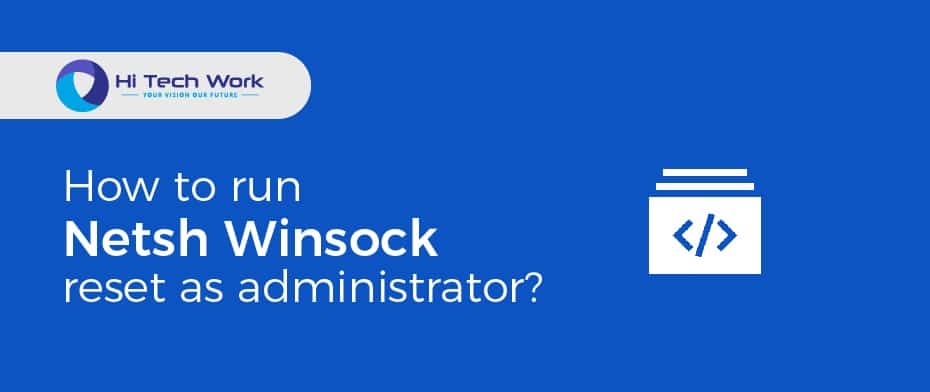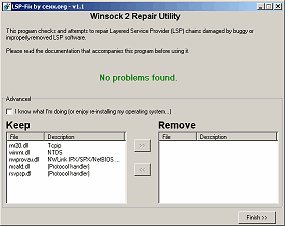

- WINSOCK FIX WINDOWS XP HOW TO
- WINSOCK FIX WINDOWS XP UPDATE
- WINSOCK FIX WINDOWS XP SOFTWARE
- WINSOCK FIX WINDOWS XP CODE
- WINSOCK FIX WINDOWS XP PC
Once restarted, open the blog in Chrome or another method to see if the issue is resolved. You must restart your computer to complete the reset. The command line should return a message similar to this: Open a command prompt as an administrator.Įnter the following command and press Enter: In fact, you are logged in as an administrator and know the Windows administrator password.
WINSOCK FIX WINDOWS XP SOFTWARE
The reset will return the wsock32 DLL to its default location and give this software a fresh start to log TCP/IP traffic. Changes can be made at any time by network programs such as browsers, email clients and VPN channels. Winsock Reset is designed to override Winsock directory settings in Windows.
WINSOCK FIX WINDOWS XP PC

If you see pop-up messages Network-related error messages.This procedure may be helpful if you are having problems connecting to the Internet in the following situations: If you are almost unable to surf the web despite a long Wi-Fi connection, resetting Winsock might be a strategy.
WINSOCK FIX WINDOWS XP UPDATE
In addition, for computers running Windows XP SP2, there is a new special netsh command that can update the Winsock key. Please restart each of our computers after this sale.

* Grants the reader access to online source code, which the can then be used to directly implement sockets programming procedures.To restore Winsock as if you had Windows XP Service Pack 2 (SP2) installed, type netsh winsock Adjust at the command prompt, but also press ENTER.
WINSOCK FIX WINDOWS XP CODE
* Streamlined and concise tutelage in conjunction with line-by-line code commentary allows readers to quickly program web-based applications without having to wade through unrelated and discursive networking tenets. * Includes completely new and expanded sections that address the IPv6 network environment, defensive programming, and the select() system call, thereby allowing the reader to program in accordance with the most current standards for internetworking. No other resource presents so concisely and effectively the material necessary to get up and running with C sockets programming. In summary, the book provides both a general overview of networking concepts to allow readers to synchronize the concepts with terminology, while providing a springboard to more advanced networking topics through the basic application of the latest technological developments. Predictability perspective in large systems. It also details defensive programming strategies in the context of building security-aware distributed systems, and introduces the select() system call from a performance and
WINSOCK FIX WINDOWS XP HOW TO
The book now explains both the IPv6 and IPv4 address schemes as well as how to do sockets programming in the mixed IPv6/IPv4 networks environment. Therefore, this edition has amended and expanded outdated sections in accordance with both new advancements and dangers. The widespread adoption of IPv6 has led to a new standard for internetworking and the exponential increase of computer processing power have enhanced the efficacy and scope of electronic espionage. The book's companion website also contains myriad employable examples of command-based source code discussed throughout the text.Ī great deal has changed in the 6 years since the first edition of this book was published. Programming concepts are introduced through simple, real-world examples, and are accompanied by line-by-line code commentary that describes the purpose of each part of the program. Written by two experienced networking instructors, the book's focused, tutorial-based approach enables the reader to master the tasks and techniques essential to virtually all client-server projects using sockets in C. TCP/IP Sockets in C: Practical Guide for Programmers is a quick and affordable way to gain the knowledge and skills needed to quickly develop sophisticated and powerful web-based applications. The Internet allows computers thousands of miles apart to exchange information through programs such as Web browsers, and nearly all of these programs gain access to network communication services through the sockets programming interface.


 0 kommentar(er)
0 kommentar(er)
